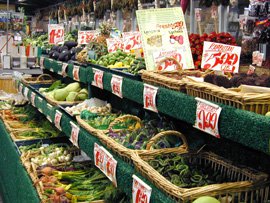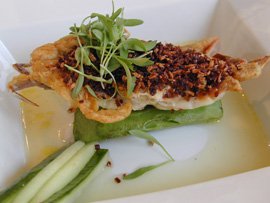As my trusted friend the Webster tells us, a meme is “an idea, behavior, style, or usage that spreads from person to person within a culture”. In the blogosphere, a meme can be a questionnaire about a particular theme — your tastes in music or books, 100 things about you, etc. — that you reply to on your blog and pass along. Nicky started such a meme just a few weeks ago called the cook next door, giving us all a chance to talk about the hows and the whys behind our food obsessions. The added bonus (made possible by her and Oliver’s impressive web design skills) is that she follows the meme’s progression, thus mapping out our ever-growing food blog neighborhood.
What is your first memory of baking/cooking on your own?
I believe my first cooking adventure was mastering the art of the microwaved oeuf cocotte when I was nine. The first thing I baked on my own was the Gâteau au Chocolat de Csaba when I was about twelve, a classic family recipe given to us by a friend who’s originally from Hungary. My rendition was somewhat undercooked in the center and my friends would only eat the outer rims. In retrospect, I like to think it was a molten chocolate cake and I was simply a misunderstood visionary. Ahem.
Who had the most influence on your cooking?
In order of appearance: 1- my mother, 2- the Internet. My mother is a superb cook and baker, and the countless hours I spent with her in the kitchen — watching, helping, licking the bowls — have undoubtedly laid the foundations for my own cooking. The rest of what I know has been gleaned not so much in books or cooking magazines, but rather on websites, forums and of course, blogs.








